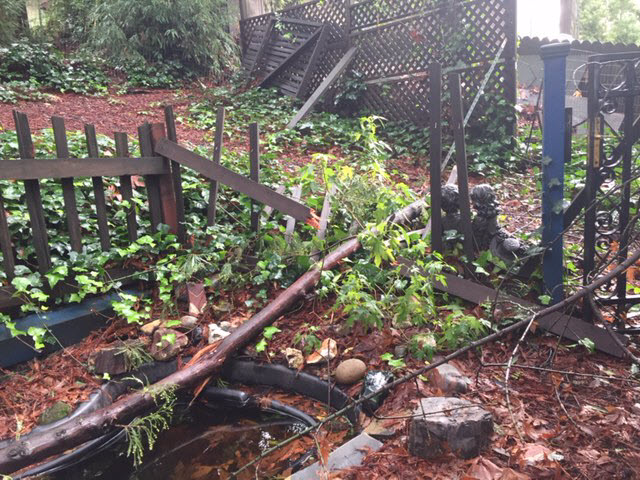I do a lot of risk assessment and contingency planning. It's a core task for project managers - and I take it seriously both in my work and personally
Over the past few weeks, I've been reminded of some hard truths about contingency planning by two events - the major storms in Northern California and the mess-up with the best picture announcement at the Oscars.
I live in the Santa Cruz mountains in the San Francisco bay area. If you've seen pictures of spider crawlers on massive landslides, trees across or in the middle of roads, or roads completely washed into oblivion, you've seen what's been happening here. My contingency plans for running my business from my home included using my iPad and data plan for communications, using our woodstove for heat and cooking, flashlights/candles/battery lanterns for light, and a landline with a non-electronic phone. We have lots of water and food supplies fo ourselves and our pets. We've executed this contingency plan more than once - for one day power outages. This time it was three days without power or internet and no way out of the area (well, OK, we could get out but no way to get back because of slides and other issues on every single route), and the contingency plan was inadequate. It brought home to me the importance of defining the probable parameters of the risk (1 day *seemed* reasonable, but when trees are falling on power lines it's going to be more), keeping those parameters updated (after years of drought we should have reassessed more thoroughly), and when possible testing the plan (we should have tried to go more than a day without using lights, internet, etc.). Our plan is now augmented with a new generator that will be patched into the electrical panel, lots of new LED lanterns, better cookware for a woodstove, and a mifi. Murphy's Law assures me that now we won't have any more 3 day power outages or significant internet outages!

The other event that brought home the need for an infrastructure for long-standing contingency plans was the mistake at the Academy Awards where the wrong envelope (with the wrong movie) was handed to the presenter for Best Picture. In 80 years there have been no issues, and PWC has a black eye now because of it. The cause? One of the two accountants was distracted by taking and posting a selfie.
The contingency planning was thorough. There were two people backing each other up. There were tried and true protocols in place. So what happened? Two things: First, as with the power outage, the contingency plan wasn't updated for current conditions. Ten years ago there were no selfies and no posting to social media, at least not mainstream. The plan was updated in one way - the accountants weren't allowed to use their phones. And that points out the other flaw - people are fallible. We sometimes hesitate to ask the hard questions or implement strict policies because we feel it indicates a lack of trust in people. In truth, those questions and policies are what helps save people from themselves. The accountant made a mistake - people do that - and it was bad for everyone. The right policy would have required that the accountants hand over cell phones before the event began just in case (and isn't that the very definition of a contingency plan - just in case?)
So keep on making those plans. Set reminders to update long-standing plans regularly. Develop a communication method for letting people know that you trust them but stuff happens and it's best for everyone to be prepared. And wherever possible, execute important contingency plans before they're necessary to test them.

